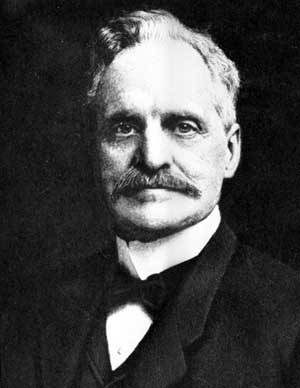On July 8, 1872, Seattle voters elect Corliss P. Stone as mayor of the City of Seattle.
Stone, a Republican, was a businessman with wide-ranging investments. In 1867, he joined S. B. Hinds and Charles H. Burnett in the firm of Hinds, Stone & Company, specializing in real estate development. The firm, operating from an office in what is now Pioneer Square, constructed one of the first brick buildings in Seattle, a two-story structure fitted with iron shutters for doors and windows. The company also built a large wharf on Elliott Bay, with several buildings for merchants and wholesalers. To ease delivery of goods unloaded at the wharf, the company established the first delivery service in the city.
The firm became known as Stone & Burnett after Hinds left the partnership in 1870. One year later, the company’s wharf collapsed, destroying a warehouse with about $15,000 worth of merchandise. A large crowd helped salvage most of the merchandise, and the wharf was rebuilt. Meanwhile, the company prospered through a number of other business ventures, including selling wagons and carriages to citizens in the rapidly growing community.
Stone was one of the incorporators of the Puget Sound Wagon Road Company, founded in the fall of 1869. The goal was to build a toll road from Seattle to White Bluff on the Columbia River, but, as historian Clarence B. Bagley put it, “the people were not ready to finance such an enterprise and nothing was done toward building the road” (Bagley, vol. 1, p. 215).
Stone also invested in early efforts to supply coal gas for lighting Seattle’s streets, residences, and businesses. He was one of the organizers of the Seattle Gas Company, founded in August 1869. Despite support from a number of other prominent citizens, including Henry A. Atkins (Seattle’s first mayor) and Henry L. Yesler (a pioneer industrialist), the company “was a little ahead of the city’s development and did not meet with sufficient encouragement to go ahead with the project” (Bagley, Vol. 1, p. 443). Gas lighting did not arrive in Seattle until December 1873.
In addition to his interests in downtown real estate, Stone purchased and developed residential property. He platted what are now the Wallingford and Fremont neighborhoods of Seattle. Stone Way and Corliss Avenue in Wallingford are named after him.
He was also involved in the young city’s social and philanthropic life, particularly with the Library Association. He was named a director of the newly reorganized association in 1872, and the following year, he made a generous donation of books to the library. He was also a trustee of the Plymouth Congregational Society.
Stone had been active in city politics for several years before being elected mayor, serving three one-year terms on the Common Council (predecessor of the City Council) between 1869 and 1872.
However, seven months after he became mayor, he reportedly embezzled $15,000 from Stone & Burnett and left Seattle for San Francisco, accompanied by a woman who was married to someone else.
John T. Jordan, Stone's predecessor, was appointed acting mayor until a special election could be arranged. On June 5, 1872, Republican Moses R. Maddocks was elected to fill the final two months of Stone's term. (Under the city charter in the 1870s, the mayor’s term of office was one year; elections were held on the second Monday in July.)
It is not entirely clear what became of Stone in later years. Historian Bagley is silent about the scandal that ended Stone’s career in municipal politics. Bagley does report that Stone was one of 23 business leaders who organized the city’s first Chamber of Commerce, on April 17, 1882, and that, indeed, he served as the group’s first recording secretary. He also says that Stone pursued a number of new business interests in the 1880s, including a race track, a lumber company, a bank, and an electric company.

